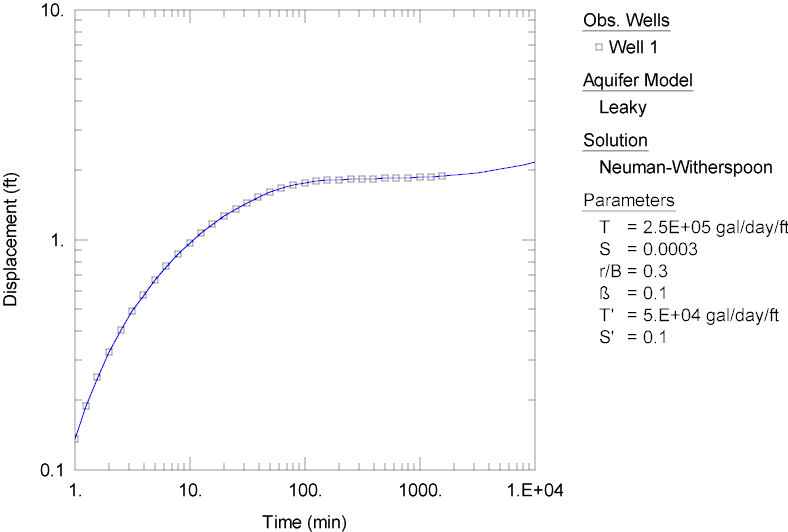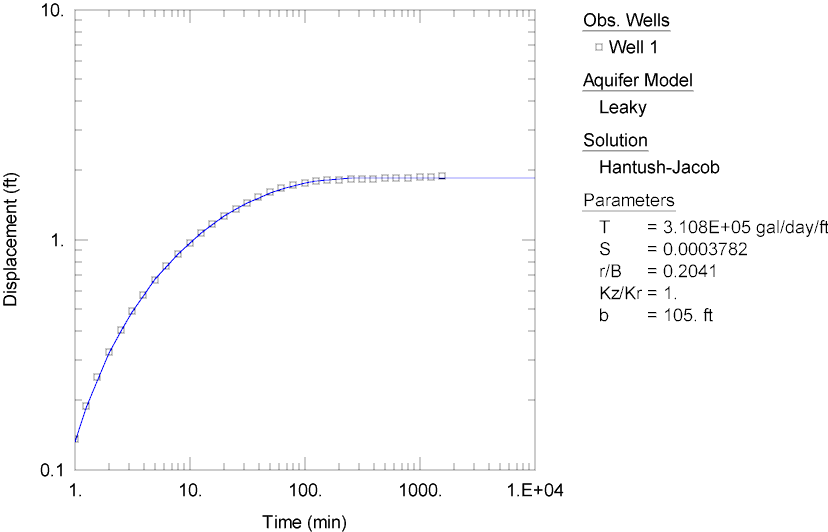Leaky Aquifers
by Glenn M. Duffield, President, HydroSOLVE, Inc.
Confined Two-Aquifer System
Neuman and Witherspoon (1969) derived a solution for flow to a pumping well in a confined two-aquifer system that accounts for leakage through a storative confining unit and drawdown in the unpumped aquifer. The Neuman and Witherspoon solution differs from the solution by Hantush and Jacob (1955) which assumes the unpumped aquifer acts as a constant-head boundary and the aquitard releases no water from storage.
Neuman and Witherspoon (1969) provided examples to illustrate errors introduced by the limiting assumptions of Hantush and Jacob solution on the estimation of transmissivity (T) for the pumped aquifer. Figure 1 shows a new example using a synthetic data set prepared with the following properties for a confined two-aquifer system:
| Pumped Aquifer |
| T=250,000 gal/day/ft S=0.0003 |
| Aquitard |
| r/B=0.3 β=0.1 |
| Unpumped Aquifer |
| T'=50,000 gal/day/ft S'=0.1 |

The synthetic data prepared using the Neuman and Witherspoon solution include the effects of drawdown in the unpumped aquifer (i.e., a constant-head boundary condition is not assumed) and storage in the aquitard. The match of the Neuman and Witherspoon (1969) solution in Figure 1 shows the "true" response of the pumped aquifer at the observation well.
Figure 2 shows the Hantush and Jacob (1955) solution matched to the synthetic data set for the confined two-aquifer system. Although the fit of this solution to the data appears satisfactory, the Hantush and Jacob solution overstates the "true" transmissivity of the aquifer by 24%. Other examples presented by Neuman and Witherspoon showed potentially larger errors in the estimates of T when using the Hantush-Jacob solution.

See also: pumping tests